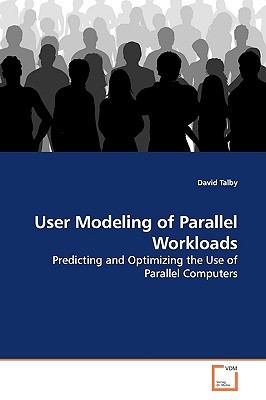
- We will send in 10–14 business days.
- Author: David Talby
- Publisher: VDM Verlag
- ISBN-10: 3639142950
- ISBN-13: 9783639142952
- Format: 15.2 x 22.9 x 0.8 cm, softcover
- Language: English
- SAVE -10% with code: EXTRA
Reviews
Description
The goal of workload modeling is to predict a computer's workload well enough to design it correctly. A poor model will lead to degraded performance and user satisfaction. Analyzing logs from multiple real parallel computers uncovers several statistical features - locality of sampling, daily cycles, weekly cycles, self similarity and flurries - that are missing from current workload models. Their practical importance is demonstrated by two new kinds of scheduling algorithms - adaptive scheduling and shortest job backfill first scheduling - which achieve an average 10% bottom- line performance gain and 35% stability gain on the production workloads. The second part of this book presents a user based workload model. It identifies four stable user types and five stable session types. It then deduces model parameters, the distributions of the arrival and activity patterns for both users and sessions, their dependencies and temporal structure. The methodology and statistical toolset is explained to make it easier to reuse in other domains. The insights and practical advice provided will be of use to anyone building or operating a large-scale parallel computer.
EXTRA 10 % discount with code: EXTRA
The promotion ends in 16d.09:25:39
The discount code is valid when purchasing from 10 €. Discounts do not stack.
- Author: David Talby
- Publisher: VDM Verlag
- ISBN-10: 3639142950
- ISBN-13: 9783639142952
- Format: 15.2 x 22.9 x 0.8 cm, softcover
- Language: English English
The goal of workload modeling is to predict a computer's workload well enough to design it correctly. A poor model will lead to degraded performance and user satisfaction. Analyzing logs from multiple real parallel computers uncovers several statistical features - locality of sampling, daily cycles, weekly cycles, self similarity and flurries - that are missing from current workload models. Their practical importance is demonstrated by two new kinds of scheduling algorithms - adaptive scheduling and shortest job backfill first scheduling - which achieve an average 10% bottom- line performance gain and 35% stability gain on the production workloads. The second part of this book presents a user based workload model. It identifies four stable user types and five stable session types. It then deduces model parameters, the distributions of the arrival and activity patterns for both users and sessions, their dependencies and temporal structure. The methodology and statistical toolset is explained to make it easier to reuse in other domains. The insights and practical advice provided will be of use to anyone building or operating a large-scale parallel computer.


Reviews